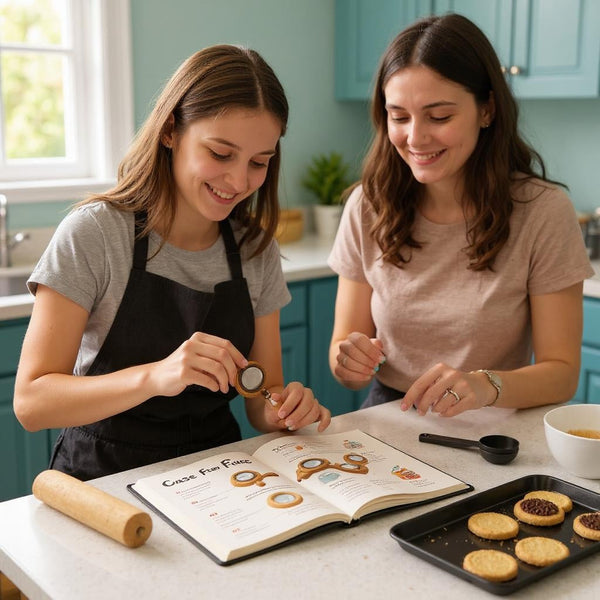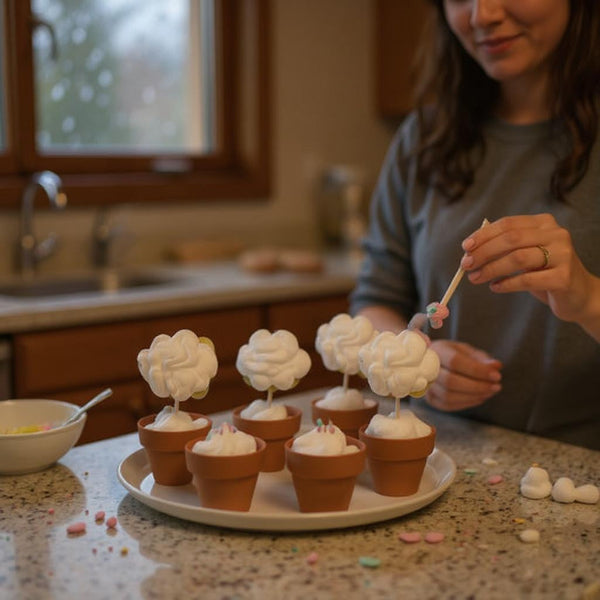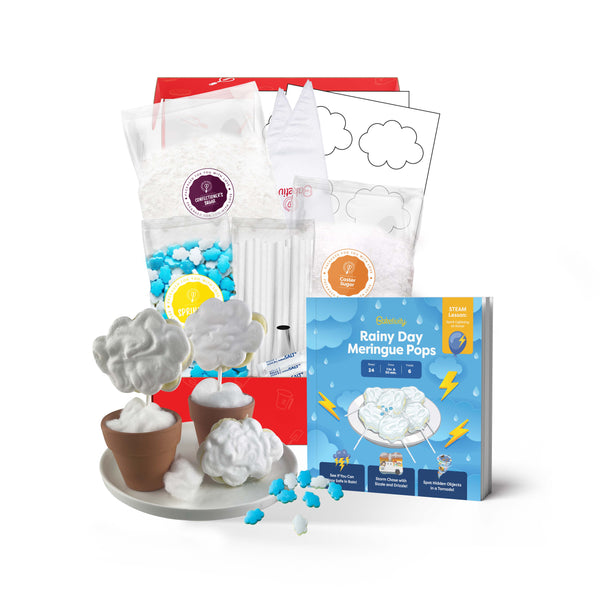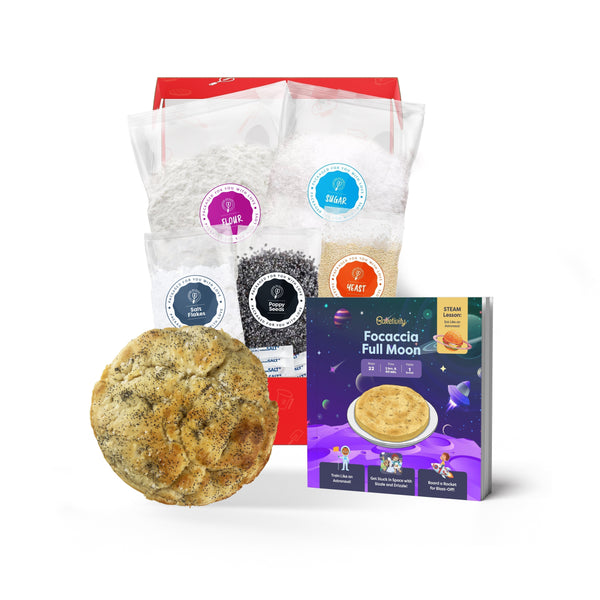In today's ever-changing world, homeschooling has become a popular choice for many families seeking a personalized and flexible education for their children. As parents, we strive to provide our kids with a well-rounded curriculum that prepares them for the future. One essential skill that often gets overlooked is
culinary education. In this comprehensive guide, we will explore the importance of culinary education, the benefits of incorporating it into homeschooling, how to build a
culinary curriculum, essential culinary skills to teach, and how to integrate culinary education with other subjects. We will also provide you with valuable resources to support your homeschool culinary journey. So, let's dive in and discover the exciting world of culinary education for homeschoolers!
Understanding the Importance of Culinary Education
Have you ever considered the role of culinary skills in everyday life? Cooking is not just about preparing food; it is an
essential life skill that empowers individuals to make healthier choices, save money, express creativity, and build meaningful connections with family and friends. By teaching your children culinary skills, you are equipping them with the tools to nourish themselves and others throughout their lives.
Furthermore, culinary education instills a sense of independence and self-sufficiency. As our children grow older, they will inevitably face situations where they need to cook for themselves. By teaching them how to cook, we are giving them the confidence to navigate these challenges and make informed decisions about their nutrition.
The Role of Culinary Skills in Everyday Life
Culinary skills are not just reserved for gourmet chefs; they have a vital role to play in everyday life. From simple tasks like chopping vegetables and boiling pasta to more complex techniques like sautéing and baking, culinary skills are the foundation of creating delicious meals at home.
Moreover, cooking at home allows families to prioritize health and nutrition. By preparing meals from scratch, you have control over the ingredients used, making it easier to avoid unhealthy additives and excess sugar and salt. This, in turn, can lead to long-term benefits for your family's well-being.
Benefits of Incorporating Culinary Education in Homeschooling
Now that we understand the significance of culinary skills, let's explore the unique benefits of incorporating culinary education into your homeschooling curriculum.
Firstly, culinary education nurtures creativity. Cooking is not just a science; it is an art form that encourages experimentation and innovation. By allowing your children to explore different ingredients and flavors, you are fostering their creativity and nurturing their culinary talents.
Secondly, culinary education promotes practical problem-solving skills. Cooking often involves adapting recipes, improvising with available ingredients, and troubleshooting unexpected challenges. By encouraging your children to problem-solve in the kitchen, you are equipping them with valuable skills that extend far beyond the culinary realm.
Lastly, culinary education cultivates cultural appreciation. Food is an integral part of every culture, and by exploring different cuisines and cooking techniques, you are immersing your children in a cross-cultural learning experience. They will develop a deeper understanding and respect for diverse food traditions around the world.
Building Your Homeschool Culinary Curriculum
Now that you recognize the importance of culinary education, it's time to build your homeschool culinary curriculum. Here are some steps to guide you:
Identifying Your Child's Culinary Interests
Begin by having a conversation with your child about their culinary interests. What types of dishes do they enjoy? Are there any specific cuisines they want to explore? Understanding their interests will help you tailor the curriculum to their preferences.
Next, consider involving your child in meal planning. Allow them to contribute ideas and participate in selecting recipes. This will give them a sense of ownership and make the learning process more engaging.
Setting Realistic Culinary Goals
It's important to set realistic culinary goals for your child. Start with simple recipes and gradually progress to more complex dishes as their skills develop. By setting achievable goals, you will keep your child motivated and ensure they have a positive learning experience.
Additionally, consider incorporating a variety of cooking techniques and kitchen tasks into their curriculum. This will provide a well-rounded culinary education and equip your child with a broad skill set.
Essential Culinary Skills to Teach
In order to build a solid foundation in culinary education, there are several essential skills that you should teach your child. Let's explore some of these key skills:
Basic Cooking Techniques
Start by teaching your child
basic cooking techniques such as chopping, slicing, and dicing. These skills form the basis for many recipes and will help your child become more confident in the kitchen.
Next, move on to teaching cooking methods like sautéing, grilling, and baking. By understanding these techniques, your child will be able to prepare a wide range of dishes and develop their own unique culinary style.
Food Safety and Hygiene
Emphasize the importance of
food safety and hygiene in the kitchen. Teach your child about proper handwashing techniques, safe food handling practices, and the importance of maintaining a clean cooking environment. These habits will ensure that your child is cooking in a safe and sanitary manner.
Meal Planning and Preparation
Show your child how to plan and prepare balanced meals. Teach them about portion sizes, food groups, and the importance of incorporating fruits and vegetables into their daily diet. This will help them develop healthy eating habits and make informed choices about their nutrition.
Integrating Culinary Education with Other Subjects
Culinary education doesn't have to be limited to solely teaching cooking skills. By integrating culinary education with other subjects, you can create a well-rounded and immersive learning experience for your child. Here are some ideas:
Culinary Math: Measurements and Conversions
Use cooking as an opportunity to teach your child practical math skills. Involve them in measuring ingredients, converting recipe quantities, and calculating cooking times. This will strengthen their math proficiency while making it relevant and enjoyable.
Food Science: Understanding Nutritional Values
Explore the science behind cooking by teaching your child about nutritional values. Discuss the benefits of different food groups, the impact of cooking methods on nutrient retention, and how certain foods affect our bodies. This will foster a deeper understanding of the relationship between food and health.
History and Geography through World Cuisines
Discover the world through food! Incorporate global cuisine into your culinary curriculum to explore history and geography. Learn about the origins of different dishes, the cultural significance of specific ingredients, and the unique cooking techniques used in various regions. This will broaden your child's horizons and make learning history and geography more engaging.
Resources for Homeschool Culinary Education
Now that you have a clear understanding of how to incorporate culinary education into your homeschooling curriculum, let's explore some valuable resources to support your journey:
Recommended Culinary Books and Online Courses
There are numerous culinary books and online courses available specifically designed for homeschoolers. Look for resources that include step-by-step instructions, age-appropriate recipes, and culinary techniques suitable for beginners. Some popular options include , which provide a comprehensive culinary education accessible from the comfort of your own kitchen.
Utilizing Kitchen Tools and Appliances for Learning
Your kitchen is a treasure trove of learning opportunities! Make use of various kitchen tools and appliances to enhance your child's culinary education. Show them how to use different utensils, explain the functions of kitchen appliances, and let them explore hands-on experiences in the kitchen. This practical approach will deepen their understanding of culinary techniques and foster a sense of confidence in the kitchen.
In conclusion, incorporating culinary education into your homeschooling curriculum is an excellent way to empower your child with essential life skills, encourage creativity and problem-solving, and foster cultural appreciation. By building a comprehensive culinary curriculum and integrating culinary education with other subjects, you will provide your child with a well-rounded education that prepares them for a fulfilling and independent future. So, put on your aprons, gather your ingredients, and embark on an exciting culinary journey with your homeschooler!
Start Your Family Baking Adventure with Baketivity!
Ready to turn your kitchen into a fun and educational bakery? Join the Baketivity Baking Club and embark on a delightful journey of family bonding, creativity, and learning. Our baking kits, infused with quality ingredients and the joy of discovery, are designed to provide you with everything you need to create lasting memories. Embrace the art of baking and nurture your child's culinary talents today.
Join the Baking Club and let's bake up some fun!




